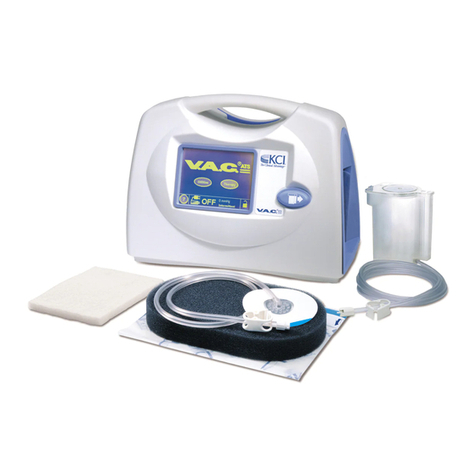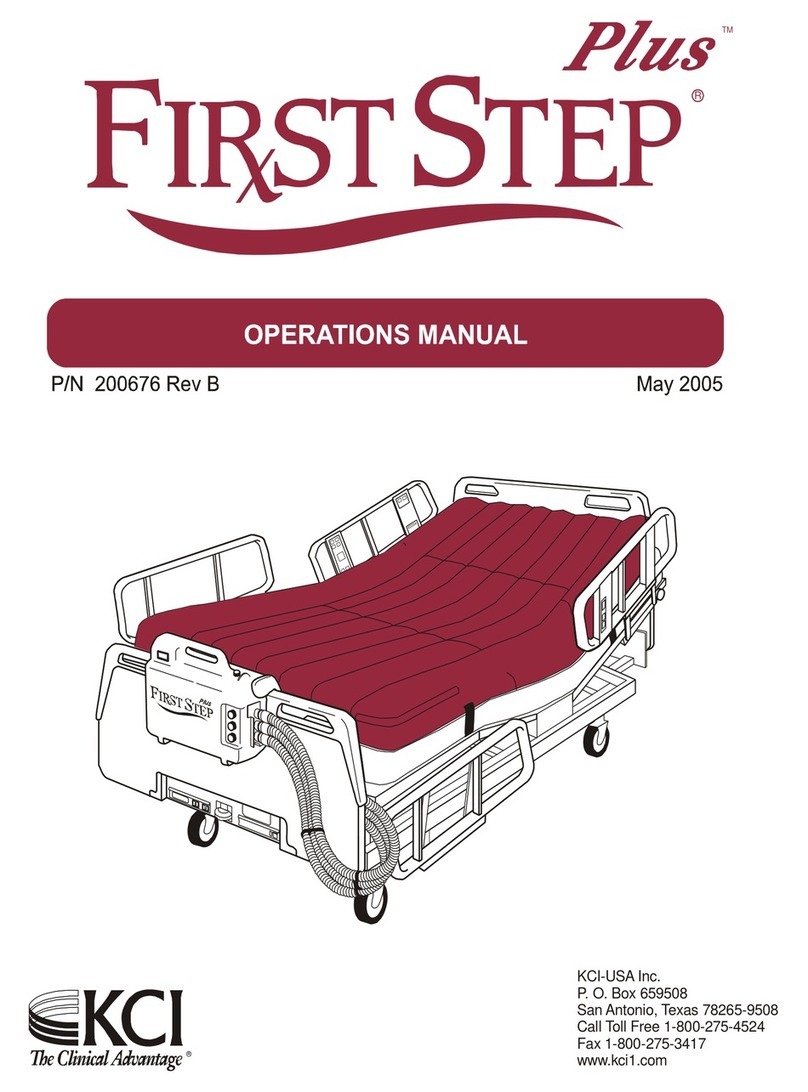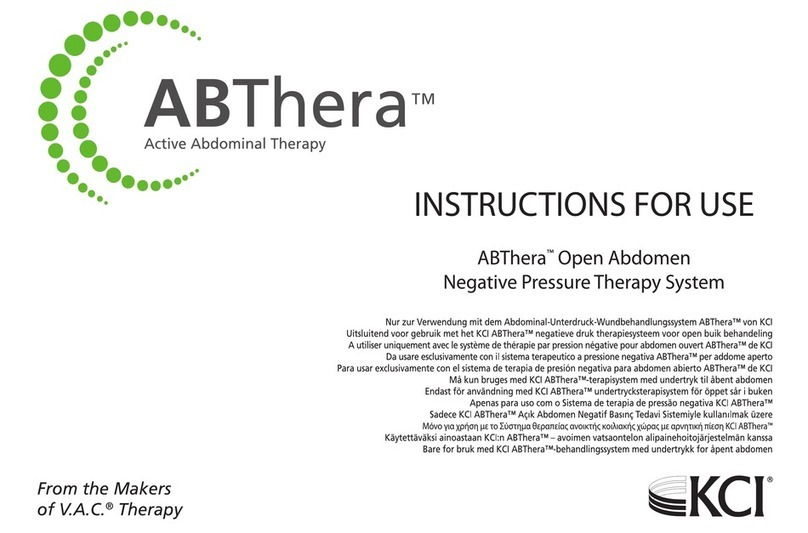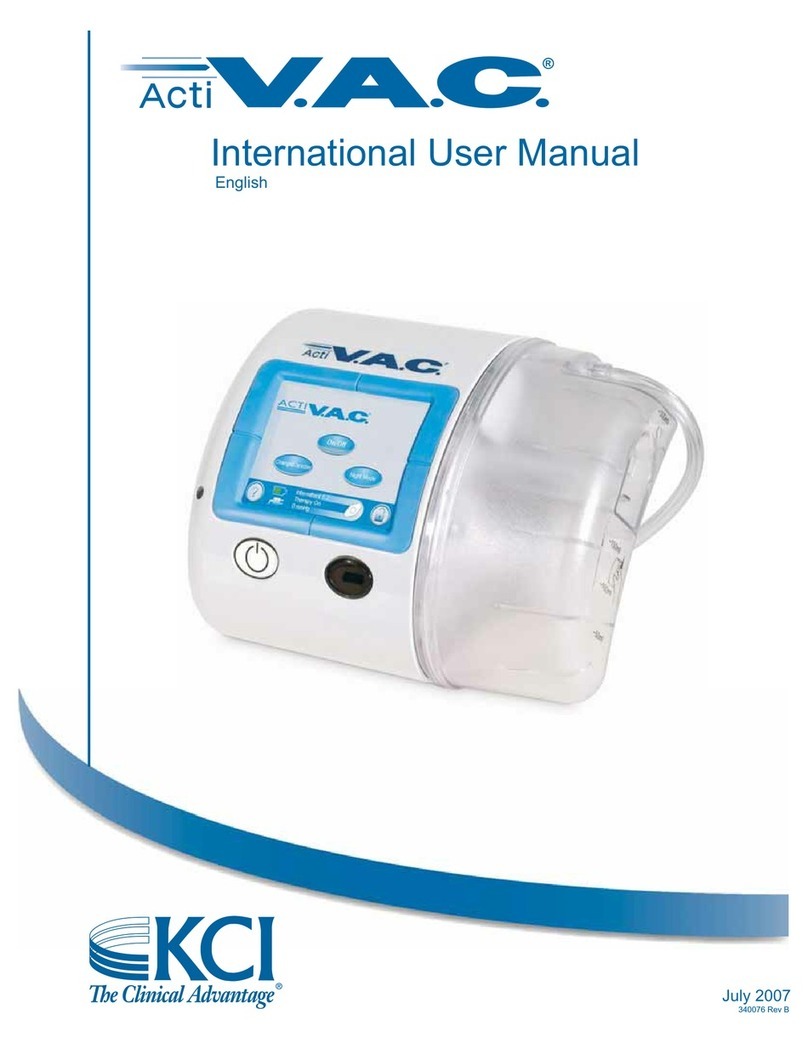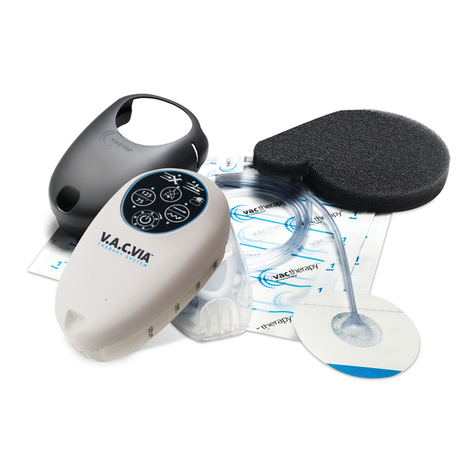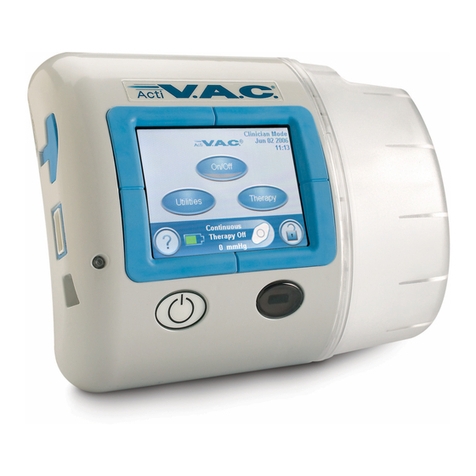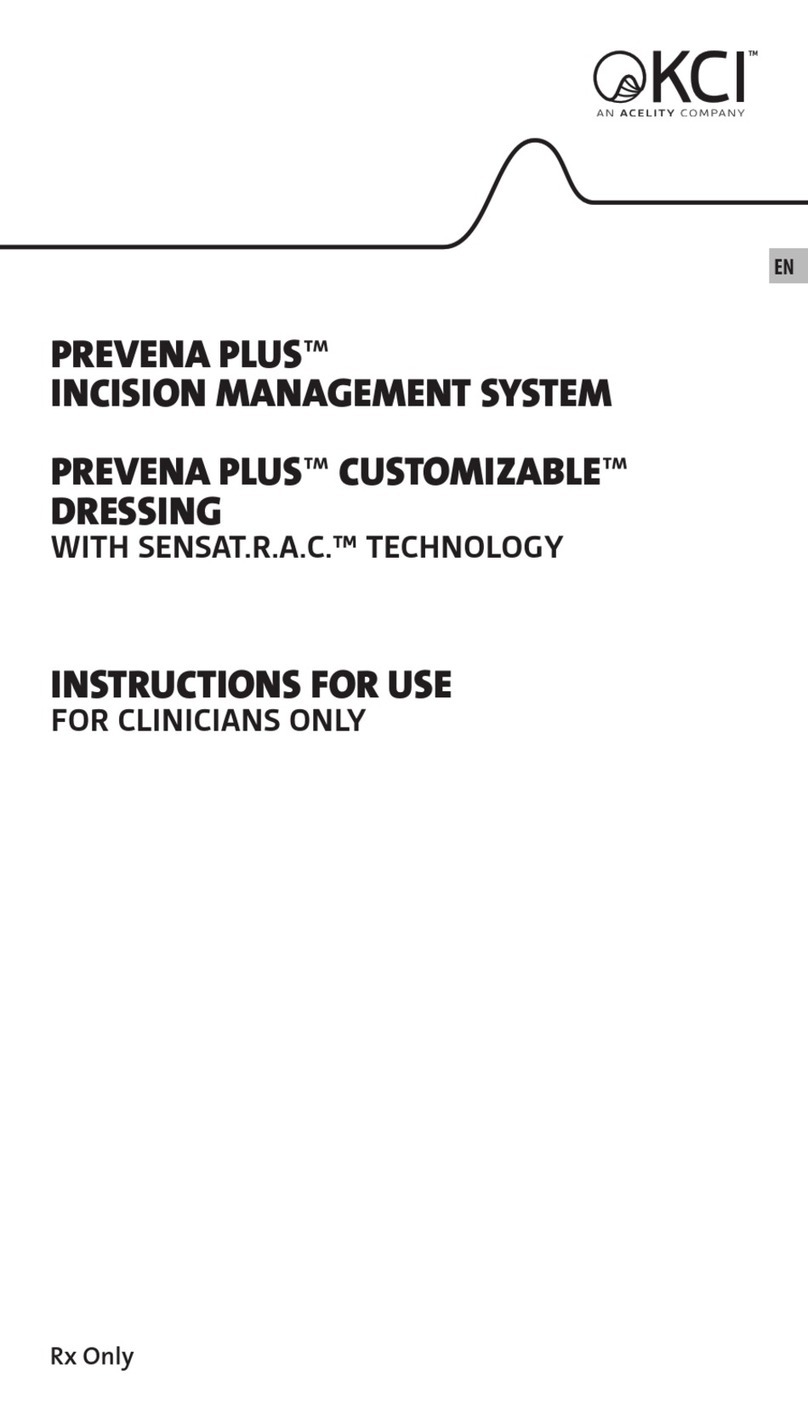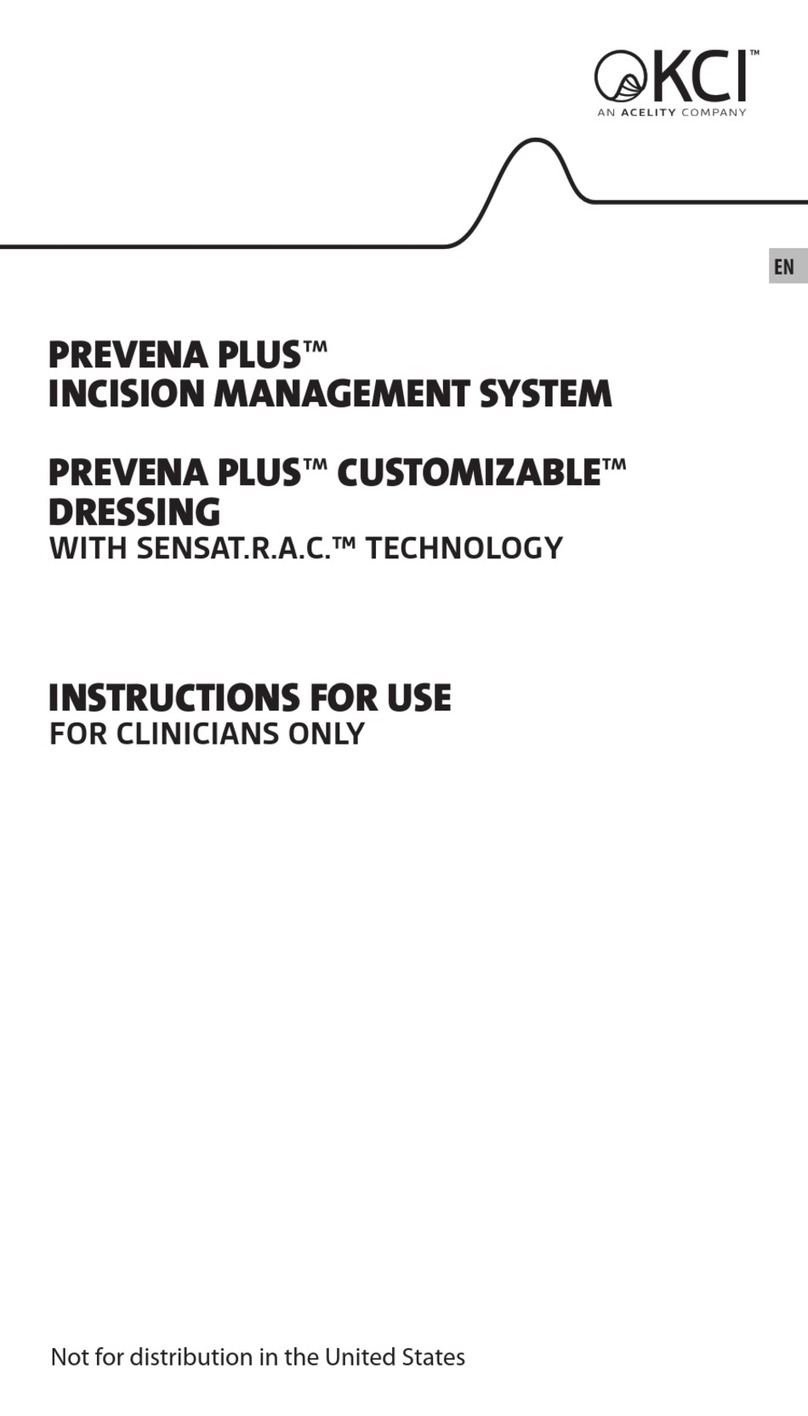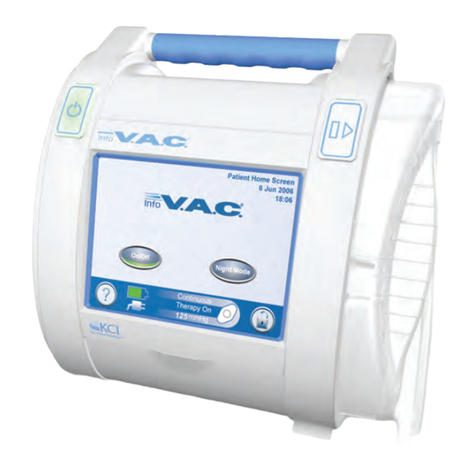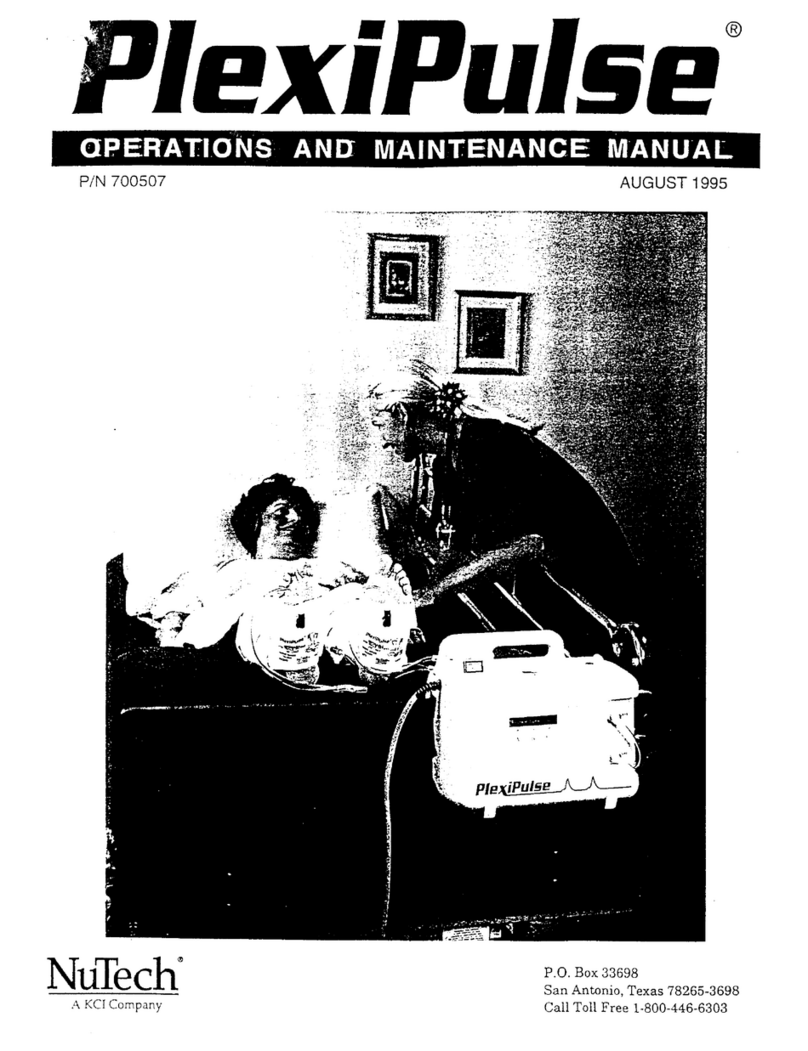
•Radiation
•Patients without adequate wound hemostasis
•Patients who have been administered anticoagulants or platelet aggregation inhibitors
•Patients who do not have adequate tissue coverage over vascular structures.
If V.A.C.®Therapy is prescribed for patients who have an increased risk of bleeding complications, they
should be treated and monitored in a care setting deemed appropriate by the treating physician.
If active bleeding develops suddenly or in large amounts during V.A.C.®Therapy, or if frank (bright red)
blood is seen in the tubing or in the canister, immediately stop V.A.C.®Therapy, leave dressing in place,
take measures to stop the bleeding, and seek immediate medical assistance. The V.A.C.®Therapy Units and
dressings should not be used to prevent, minimize or stop vascular bleeding.
•Protect Vessels and Organs: All exposed or superficial vessels and organs in or around the wound
must be completely covered and protected prior to the administration of V.A.C.®Therapy.
Always ensure that V.A.C.®Dressings do not come in direct contact with vessels or organs. Use of a thick
layer of natural tissue should provide the most effective protection. If a thick layer of natural tissue is
not available or is not surgically possible, multiple layers of fine-meshed, non-adherent material, or bio-
engineered tissue may be considered as an alternative, if deemed necessary by the treating physician to
provide a complete protective barrier. If using non-adherent materials, ensure that they are secured in a
manner as to maintain their protective position throughout therapy.
Consideration should also be given to the negative pressure setting and therapy mode used when
initiating therapy.
Caution should be taken when treating large wounds that may contain hidden vessels, which may not
be readily apparent. The patient should be closely monitored for bleeding in a care setting deemed
appropriate by the treating physician.
•Infected Blood Vessels: Infection may erode blood vessels and weaken the vascular wall which may
increase susceptibility to vessel damage through abrasion or manipulation. Infected blood vessels are
at risk of complications, including bleeding, which, if uncontrolled, could be potentially fatal. Extreme
caution should be used when V.A.C.®Therapy is applied in close proximity to infected or potentially
infected blood vessels. (Refer to Protect Vessels and Organs section above.)
•Hemostasis, Anticoagulants, and Platelet Aggregation Inhibitors: Patients without adequate
wound hemostasis have an increased risk of bleeding, which, if uncontrolled, could be potentially fatal.
These patients should be treated and monitored in a care setting deemed appropriate by the treating
physician.
Caution should be used in treating patients on doses of anticoagulants or platelet aggregation
inhibitors thought to increase their risk for bleeding (relative to the type and complexity of the wound).
Consideration should be given to the negative pressure setting and therapy mode used when initiating
therapy.
•Hemostatic Agents Applied at the Wound Site: Non-sutured hemostatic agents (for example, bone
wax, absorbable gelatin sponge, or spray wound sealant) may, if disrupted, increase the risk of bleeding,
which, if uncontrolled, could be potentially fatal. Protect against dislodging such agents. Consideration
should be given to the negative pressure setting and therapy mode used when initiating therapy.
•Sharp Edges: Bone fragments or sharp edges could puncture protective barriers, vessels, or organs
causing injury. Any injury could cause bleeding, which, if uncontrolled, could be potentially fatal. Beware
of possible shifting in the relative position of tissues, vessels or organs within the wound that might
increase the possibility of contact with sharp edges. Sharp edges or bone fragments must be eliminated
from the wound area or covered to prevent them from puncturing blood vessels or organs before the
application of V.A.C.®Therapy. Where possible, completely smooth and cover any residual edges to
decrease the risk of serious or fatal injury, should shifting of structures occur. Use caution when removing
dressing components from the wound so that wound tissue is not damaged by unprotected sharp edges.
Infected Wounds: Infected wounds should be monitored closely and may require more frequent dressing
changes than non-infected wounds, dependent upon factors such as wound conditions and treatment
goals. Refer to dressing application instructions (page 6 of this IFU) for details regarding dressing change
frequency. As with any wound treatment, clinicians and patients/caregivers should frequently monitor
the patient’s wound, periwound tissue and exudate for signs of infection, worsening infection, or other
2
